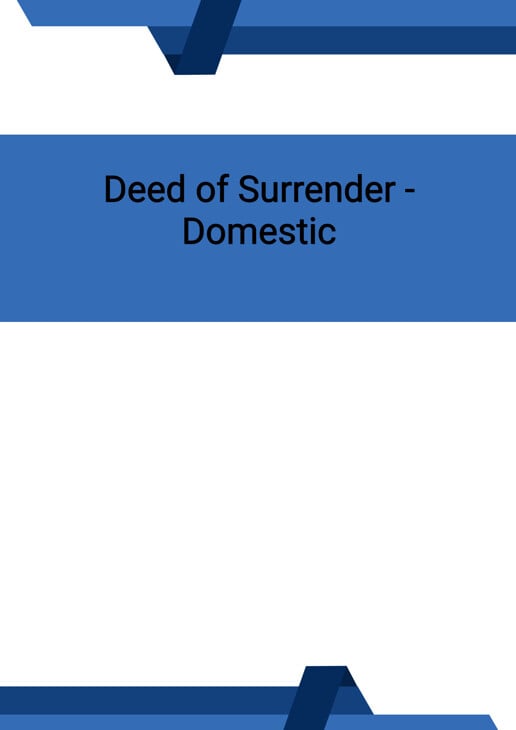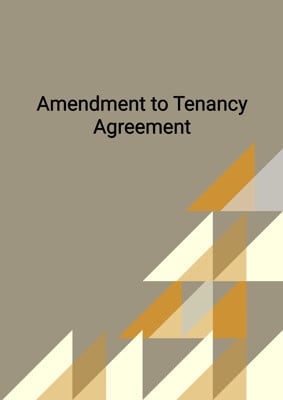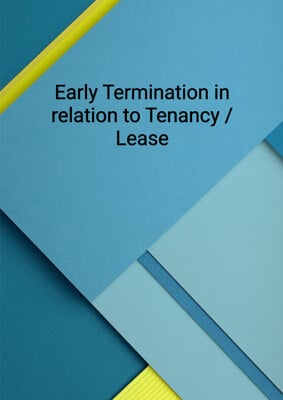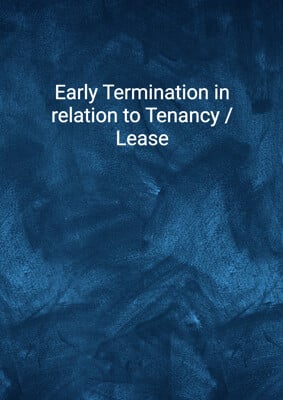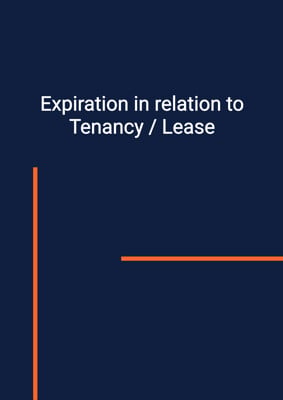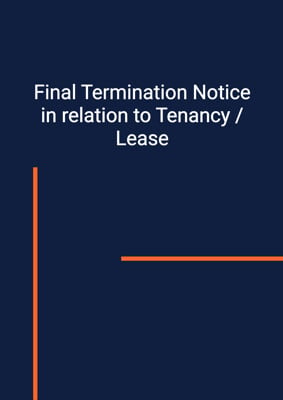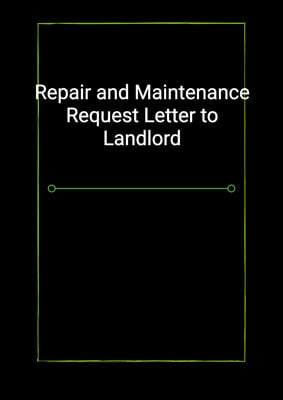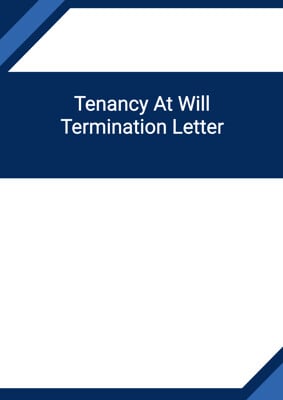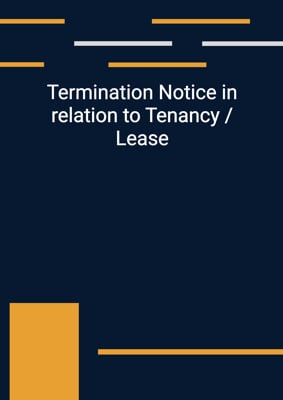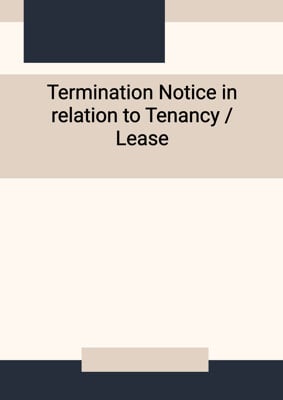How to Tailor the Document for Your Need?
01
Create Document
Fill in the details of the parties. You can click the "Fill with Member’s Information" button to complete it with information saved to your account.
02
Fill Information
Please fill in any additional information by following the step-by-step guide on the left hand side of the preview document and click the "Next" button.
03
Get Document
When you are done, click the "Get Document" button and you can download the document in Word or PDF format.
04
Review Document
The document should be signed by the authorised signatory (or directors of a company) and witnessed to complete the formality.
Document Preview
Document Description
The Deed of Surrender - Domestic is a legal document that outlines the agreement between a landlord and a tenant regarding the surrender of a property. This document is important as it formalizes the process of terminating the tenancy and ensures that both parties are aware of their rights and obligations.
The entire document consists of several sections, each addressing different aspects of the surrender process. The first section provides a background and context for the agreement, stating the original date of the agreement and the terms and conditions contained therein. It also mentions the term of the tenancy, including the commencement date and the end date.
The second section focuses on the tenant's intention to surrender the unexpired residue of the term to the landlord on the surrender date. It states that the tenant will deliver vacant possession of the premises to the landlord, merging and extinguishing the term in the reversion upon the determination of the agreement.
The third section outlines the tenant's obligations leading up to the surrender date. This includes discharging water charges, electricity charges, telephone charges, and other outgoings consumed in the premises. The tenant is also required to observe all the terms and conditions specified in the agreement until the surrender date.
The fourth section emphasizes that the tenant should not assign, underlet, or otherwise part with the possession of the premises to any person. This ensures that the landlord maintains control over the property until the surrender date.
The fifth section highlights the tenant's responsibility to return all keys, remote controls, and other properties of the premises to the landlord. The tenant is also required to make any necessary repairs or pay for damages to the premises before the surrender date.
The sixth section addresses the release of liabilities and obligations upon the tenant's due performance of its obligations. If there are no arrears of rent or other outstanding payments, the landlord will release the tenant from any further obligations under the agreement.
The seventh section states that the landlord will refund the security deposit to the tenant within 7 days of the delivery of vacant possession and the determination of the agreement. However, this refund is subject to the tenant's payment of all arrears and other outstanding fees.
The eighth section mentions the sharing of stamp duty for the preparation of the agreement and its counterpart between the parties.
The ninth section clarifies that only the parties involved in the agreement have the right to enforce its terms under the applicable jurisdiction's laws.
In conclusion, the Deed of Surrender - Domestic is a comprehensive document that covers all aspects of the surrender process. It ensures that both the landlord and the tenant understand their rights and obligations, providing a clear framework for the termination of the tenancy.
How to use this document?
1. Deliver vacant possession: On the surrender date, the tenant should ensure that the premises are completely empty and free of any personal belongings. This includes removing all furniture, appliances, and other items.
2. Settle outstanding charges: Before the surrender date, the tenant must settle any outstanding water charges, electricity charges, telephone charges, and other outgoings consumed in the premises. This ensures that all financial obligations are fulfilled.
3. Adhere to terms and conditions: The tenant should continue to observe all the terms and conditions specified in the original agreement until the surrender date. This includes maintaining the property and complying with any additional requirements.
4. Return keys and properties: On or before the surrender date, the tenant must return all keys, remote controls, and other properties of the premises to the landlord. Any damages to the premises should be repaired or compensated for.
5. Clear outstanding payments: To be released from liabilities and obligations, the tenant must ensure that there are no arrears of rent, water charges, electricity charges, telephone charges, or any other outstanding payments up to and including the surrender date.
6. Refund of security deposit: If all obligations are fulfilled, the landlord will refund the security deposit within 7 days of the delivery of vacant possession and the determination of the agreement. However, the tenant must have paid all arrears and other outstanding fees.
7. Share stamp duty: Both the landlord and the tenant are responsible for sharing the stamp duty for the preparation of the agreement and its counterpart.
8. Enforceability of the agreement: It is important to note that only the parties involved in the agreement have the right to enforce its terms under the applicable jurisdiction's laws.
By following these steps, both the landlord and the tenant can ensure a smooth and legally compliant surrender process.
Not the right document?
Don’t worry, we have thousands of documents for you to choose from:
